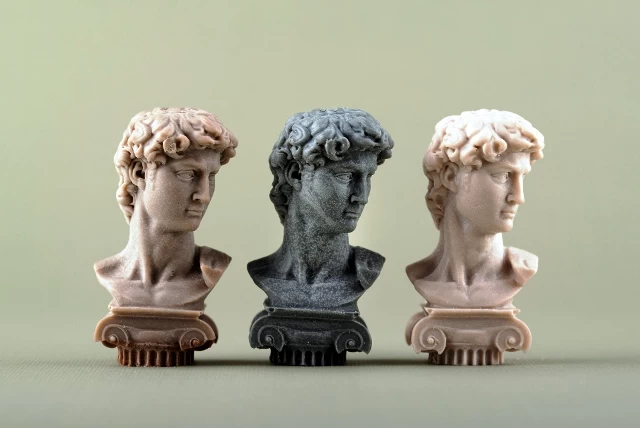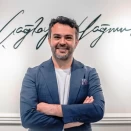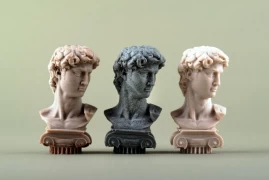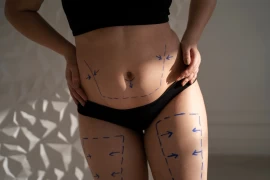
Plastic Surgery in Art: Da Vinci and the Golden Ratio
- Plastic Surgery in Art: Da Vinci and the Golden Ratio
- On 'Da Vinci' and the 'Golden Ratio'…
- Human Body and Aesthetic Concerns
- Our Work Involves Artistic Value
- Precise Planning in Aesthetic Surgery Affects Success
- Da Vinci Participated in More Than Thirty Autopsies and Made Drawings
- The Significance of the Golden Ratio
- Golden Ratio Everywhere
On 'Da Vinci' and the 'Golden Ratio'…
Plastic surgery is derived from the word "plasticos," which means "to shape" or "to mold." Today, aesthetic surgery, also known as 'cosmetic surgery,' is performed by 'plastic, reconstructive, and aesthetic surgery' specialists. Aesthetic surgery stands out as an area with a different focus than reconstructive surgery and other surgical disciplines. While other surgical disciplines generally focus on treating diseases in organs or systems, aesthetic surgery is known for surgical interventions done mainly for beauty and aesthetic concerns. Aesthetic surgery involves reshaping and contouring the individual's appearance to improve and beautify it.
In general, aesthetic surgeons who perform reshaping surgeries on healthy individuals have different dimensions of technical excellence and flawless theoretical knowledge compared to their colleagues. Since the surgeries performed by aesthetic surgeons are a significant focus of aesthetic perception, the surgeon should have an idea about a 'common positive aesthetic perception' of the human body. Considering that aesthetic surgery is closely related to form and beauty, it is inconceivable for it to be far from aesthetic perception and artistic perspective.
Human Body and Aesthetic Concerns
The aesthetic concept related to the human body, like other aesthetic concepts, is open to subjective or objective evaluations. However, it should never be forgotten that regardless of the evaluation method, the pursuit of creating a "universal admired and accepted perfect depiction of the human body" has continued for thousands of years in various art forms, especially in sculpture and painting. Ignoring the positive aesthetic judgments in the arts that have been lasting for centuries would be unthinkable for an aesthetic surgeon.
Our Work Involves Artistic Value
The education of Plastic, Reconstructive, and Aesthetic Surgery covers a long process. During this process, specialization students receive practical training like other specialization students in services, outpatient clinics, and operating rooms, including patient evaluations, preoperative preparations, performing surgeries, postoperative care, and post-discharge patient follow-ups. However, unfortunately, the education on concepts such as ratio/proportion, balance, symmetry/asymmetry, and dimensionality is not included with an artistic perspective in this process and subsequent stages. However, the concepts used in aesthetic surgery procedures are the same as those in artistic-based concepts.
Therefore, it is possible for the surgeon to add artistic value to the work they perform through their personal effort and accumulation.
Precise Planning in Aesthetic Surgery Affects Success
In Aesthetic Surgery, the object being shaped is living human tissue, and therefore, most moves are irreversible. Therefore, good planning is essential in surgeries. Aesthetic surgeons often use drawings to create the surgical plan, explain the plan to patients/other surgeons, and make preoperative markings on the patients' bodies. Being able to draw proportional and accurate human anatomy may not be a necessity for aesthetic surgeons, but it will be a skill that provides great convenience and superiority.

Da Vinci Participated in More Than Thirty Autopsies and Made Drawings
When it comes to drawing applications and the medical world, the name that comes to mind first is undoubtedly Leonardo da Vinci. Living between 1452 and 1519, Leonardo da Vinci was renowned for his works in engineering, architecture, and mathematics, as well as his studies in painting, sculpture, and anatomy. Although not a physician, Da Vinci made great efforts to create anatomical drawings by pushing the conditions of his time through participating in more than thirty autopsies.
The main reason for creating anatomical drawings that are so close to perfection and will be accepted as references for centuries is the detailed observations he made during the autopsies. The most significant factor in his immortal works is his ability to use the anatomical knowledge he acquired with an unparalleled mastery in mathematics, painting, and sculpture.
The Significance of the Golden Ratio
It is known that Da Vinci pursued mathematical perfection in his works. Therefore, he attached importance to the concept of the 'Golden Ratio.'
Although it is not precisely known who first used the 'Golden Ratio,' it is likely to have been discovered by the ancient Egyptians and Greeks. In the fourth century BC, Euclid first mentioned dividing a line into two parts, where the longer part is related to the shorter part in an important ratio. He referred to it as "dividing a line into extreme and mean ratio." The designs of important structures of the Egyptian civilization, such as the Great Pyramid of Giza and other pyramids, as well as the famous structure of Greek civilization, the Parthenon temple, were made based on the Golden Ratio.

Golden Ratio Everywhere
This ratio corresponds to 1.618, known as the 'Golden Ratio' or the 'phi number.' It is possible to come across the Golden Ratio in many places, from the structure of DNA to the shape of immense galaxies. The human body also exhibits this ratio. The ratio of the distance between the head-umbilicus (navel) and umbilicus-foot to the entire length of the body is close to the Golden Ratio. Many Golden Ratios can also be found in the human face. Horizontally drawn lines passing through the lips and the tip of the nose and dividing the distance between the chin and the eyes exhibit the Golden Ratio. Additionally, the width of the nose, the distance between pupils and the tip of the nose, and the distance between pupils are also in the Golden Ratio relationship. When viewed from the side, the facial area shows that various distances between the oral commissures, chin, the tip of the nose, eyes, and eyebrows are in harmony with the Golden Ratio. Limiting the positive aesthetic perception of human races' body forms to a single ratio (Golden Ratio) would not be correct. Moreover, proportional imbalances and asymmetries in the right amount and location can play a role in enhancing the beauty perception. Sometimes, even an imperfect facial structure when separated into subunits can be evaluated as beautiful and attractive as a whole.
What will enable an aesthetic surgeon to make more accurate and easier decisions during surgery is to have knowledge about appropriate proportions on the body and face. With this information, the surgeon can achieve better results in their professional practice. The need for technical knowledge and experience is at the highest level in surgical practice. The goal of the surgeon should be to achieve perfection while trying to correct a disease or disorder encountered. In doing so, they must be able to adapt well to time, society, many other factors beyond their control, and especially changes specific to the patient.
It is precisely at this point that bringing an artistic approach to the work becomes essential. Because anything without art is somehow incomplete, and a holistic approach can only be achieved through art. When it comes to aesthetic surgery, undoubtedly, this need becomes more pronounced.






